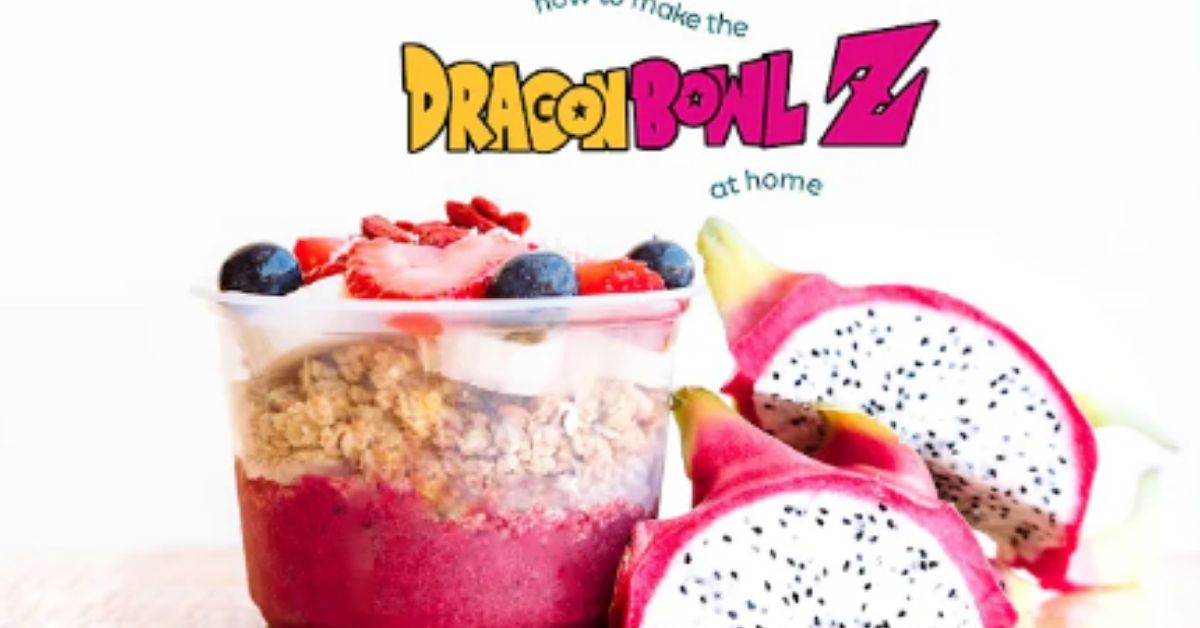Imagine walking through the colorful aisles of your local health food store, your eyes landing on the vibrant reds of pitaya and the deep purples of acai. These exotic fruits have not only captured the aesthetic appeal of health enthusiasts but have also sparked a debate: which one reigns supreme in the world of superfoods?
You’ve probably heard of acai bowls and dragon fruit smoothies, but how do these fruits really stack up against each other? From their nutritional profiles to their environmental impact, understanding the differences can help you make better choices for your health and taste preferences. Let’s dive into the colorful world of pitaya and acai to discover which fruit might just become your new favorite.
Understanding Pitaya and Acai: Overview
What Is Pitaya?
Pitaya, often called dragon fruit, is a vibrant cactus fruit that originates from the Americas but is now cultivated in various tropical and subtropical regions worldwide. Its appearance is striking with a bright pink or sometimes yellow skin and soft, speckled pulp, usually white or red. Nutritionally, pitaya offers a host of benefits as it is low in calories yet rich in antioxidants, vitamins, and minerals. It contains vitamin C, several types of B vitamins, and is also a good source of dietary fiber, which helps in digestion and maintaining a healthy gut.
What Is Acai?
Acai berries come from the acai palm tree, native to the rainforests of South America. These berries are small and round, resembling grapes but are darker and almost black in color. Acai is highly praised for its nutritional content, especially its antioxidant properties. The berries are also rich in heart-healthy fats and low in sugar. They are commonly processed into a pulp and used in beverages like smoothies and bowls, where they’re often paired with other fruits and granola. Acai’s unique earthy taste makes it a popular choice among those who prefer less sweet health foods.
Nutritional Comparison: Pitaya vs Acai
Calories and Macronutrients
Understanding the caloric and macronutrient content of pitaya and acai aids you in diet planning. Pitaya is notably low in calories, with a 100-gram serving containing about 60 calories. This fruit is also low in fat but rich in fiber, making it an excellent choice for weight management. Acai, however, contains about 70 calories per 100-gram serving and offers a higher fat content, primarily due to its omega-9 and omega-6 fatty acids, which are beneficial for heart health.
Both fruits are minimal in protein; pitaya provides nearly 1.2 grams per serving while acai offers around 2 grams. Carbohydrates are fairly balanced between the two, with acai slightly higher due to its smaller amounts of dietary fiber.
Vitamins and Minerals
Pitaya and acai are packed with vitamins and minerals essential for your body’s optimal functioning. Pitaya is a rich source of Vitamin C, providing you with about 3% of your daily needs per 100 grams. It’s also high in several B vitamins, particularly vitamin B1 (thiamine) and B3 (niacin), aiding in improving your metabolism and skin health respectively.
Acai scores higher in antioxidant content, thanks to its substantial levels of Vitamin A and flavonoids. The berry’s mineral profile is impressive as well, offering zinc, iron, and calcium, which support immune function, oxygen circulation, and bone health.
By comparing their nutritional benefits, you can decide which fruit suits your health needs better, whether you’re looking to boost vitamin intake, manage weight, or increase antioxidant consumption.
Health Benefits Explored
Antioxidant Properties
Pitaya and acai both offer powerful antioxidant properties, but their contributions vary significantly. Acai berries lead with higher levels of antioxidants, notably anthocyanins, which are known for reducing inflammation and improving heart health. Consuming acai could help you counteract the damaging effects of free radicals. In contrast, pitaya provides a different set of antioxidants like betalains, which give the fruit its vibrant pink color and are shown to support the liver and decrease blood sugar levels.
Impact on Digestive Health
Regarding digestive health, pitaya stands out due to its high fiber content. A single 100-gram serving of pitaya contains approximately 3 grams of fiber, which aids in bowel regularity and prevents constipation. Its oligosaccharides also act as prebiotics, improving gut health by fostering beneficial bacteria growth. Meanwhile, acai, with its significant amount of omega-9 fatty acids, promotes a healthier digestive environment and may reduce inflammation in the digestive system, offering you a subtle yet effective support for your gastrointestinal health.
Culinary Uses and Recipes
Incorporating Pitaya
Pitaya, also known as dragon fruit, adds a vibrant touch and subtle sweetness to various dishes. You can enjoy this fruit both fresh and cooked, making it a versatile ingredient in your kitchen. Start your day with a refreshing pitaya smooth mixture in smoothies or slice it atop your morning cereal or yogurt for an extra burst of nutrients. For a tropical flair, incorporate pitaya into fruit salads or serve it alongside seafood dishes to enhance the flavor with its light, sweet notes.
Creating visually stunning desserts is effortless with pitaya. Its bright pink flesh can be used in fruit tarts, sorbets, or simply scooped out and consumed fresh with a sprinkle of lime juice. Moreover, the fruit’s mildly sweet profile pairs excellently in cocktails and mocktails, providing a natural coloring that’s sure to impress.
Incorporating Acai
Acai berries, renowned for their deep purple hue and rich, earthy taste, are primarily used in their blended form. A classic way to enjoy acai is in a bowl, where it’s blended to a thick consistency and topped with granola, sliced fruit, and a drizzle of honey. This not only makes a nourishing breakfast or snack but also a hearty meal that fills you without being too heavy.
For a creative twist, try incorporating acai into your baking recipes like muffins and pancakes to add a nutritional boost and intriguing color. Acai pairs wonderfully with chocolate and nutty flavors, making it an excellent addition to smoothies or homemade protein bars. If you’re in the mood for something refreshing, blend acai with other fruits and freeze the mixture into popsicles for a cool treat on a hot day.
Both pitay and acai offer distinctive flavors and health benefits that can enhance a variety of dishes from breakfasts to desserts, making them invaluable additions to your culinary repertoire.
Consumer Popularity and Market Availability
Price and Accessibility
Pitaya, commonly known as dragon fruit, tends to have a higher price tag compared to many other fruits due to its exotic origin and less pervasive farming. Originating mainly from Southeast Asia and Central and South America, its availability can be limited in non-tropical regions. This scarcity often leads to higher costs, especially when sourced from organic farms.
Acai berries, on the other hand, also carry a premium price, primarily due to their perishable nature. They are predominantly harvested in the Amazon rainforest, requiring immediate processing after picking to maintain their nutritional integrity. This process often involves freeze-drying into powders or mixing into purees, which adds to the cost. Despite this, their widespread popularity in health foods and beverages helps maintain a steady market presence.
Trendiness in Health and Wellness Circles
Acai has long been a staple in the health and wellness industry, especially known for its role in trendy diet plans and smoothie bowls. Its rich, dark color and purported health benefits make it highly popular on social media, driving its demand among health-conscious consumers.
Pitaya, with its vibrant pink hue and unique appearance, has also caught the eye of health enthusiasts and culinary experts alike. It’s frequently featured in Instagram-worthy dishes, contributing to its desirability and increasing consumer interest. The demand for aesthetically pleasing and nutritious ingredients in meals continues to rise, positioning both pitaya and acai as frontrunners in the health food market.
Conclusion
Choosing between pitaya and acai depends largely on your dietary needs and culinary preferences. If you’re looking for a low-calorie option rich in vitamins and fiber pitaya might be your best bet. On the other hand if heart health and higher antioxidant intake are your priorities acai could be more suitable. Both fruits offer unique flavors and health benefits that can enhance your meals and support your wellness journey. As you explore their uses in various dishes remember that both can be delicious and healthful additions to your diet. Ultimately the choice between pitaya and acai should align with your personal health goals and taste preferences.
Related Posts:
- Top Health Benefits of Acai Bowls: Nutrients & Preparation Tips
- Pitaya vs Acai: Comparing Nutrition, Health Benefits & Culinary Uses
- Easy Nectarine Juice Recipe: Fresh, Tasty & Healthy Homemade Drink
- Easy Apple Orange Juice Recipe: Refreshing Start to Your Day
- Ultimate Guide to Tangelo Juice: Benefits, Preparation & Storage Tips
- Refreshing Green Melon Juice: Benefits, Recipe, and Serving Tips
- Ultimate Guide to Making Yellow Juice: Tips, Tools & Serving Ideas
- Easy Homemade Pineapple Cough Syrup Recipe: Natural Relief for Sore Throats
- Fresh Citrus Juice Recipe: Prep, Serve, and Store Tips
- Ultimate Magic Juice Recipe: Boost Immunity & Vitality with Natural Ingredients


